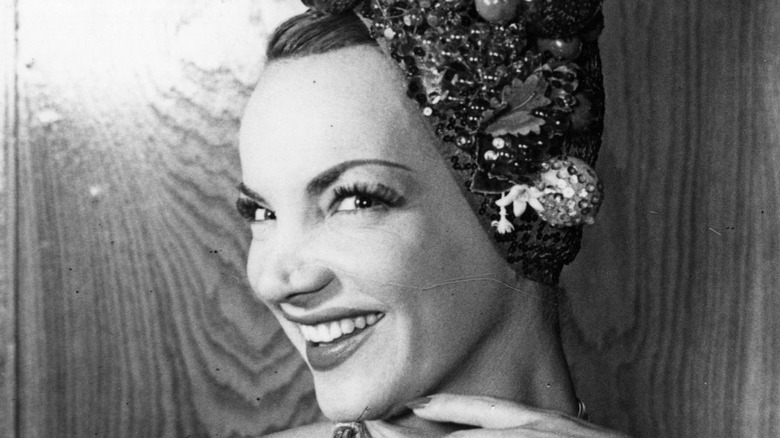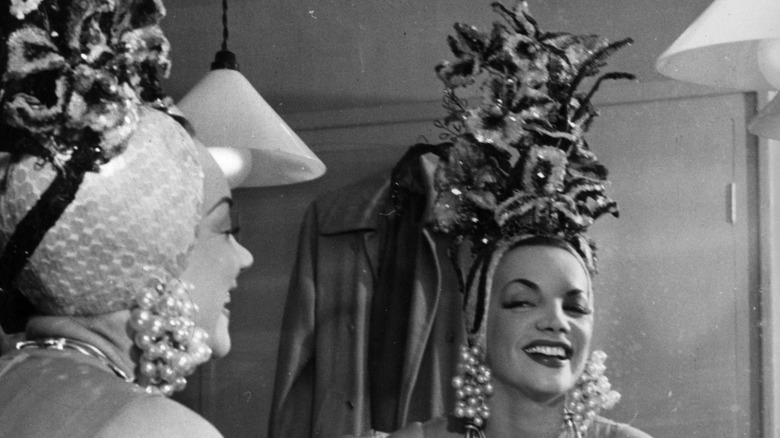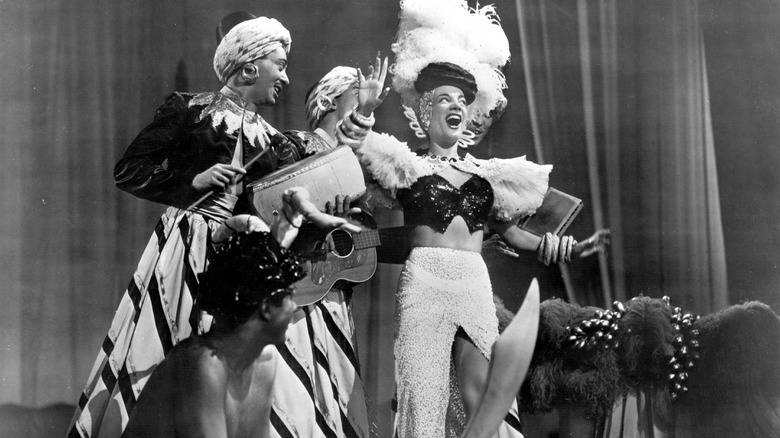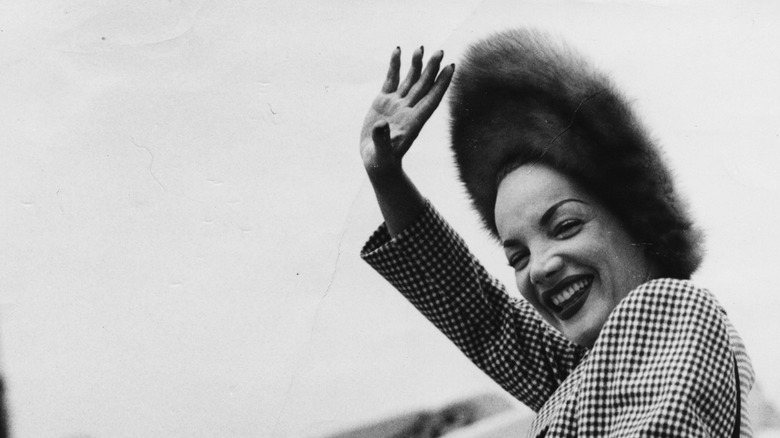How Carmen Miranda Changed Her Appearance For Hollywood
Carmen Miranda isn't a name that is instantly recognizable to most people today. She was one of the biggest stars in the world at her peak, but now only an echo of her fame remains in the Chiquita Banana logo or the occasional Looney Tune rerun.
Miranda was the woman with the bananas on her head. In the early, homogenized days of Hollywood, she was an exotic spark that was impossible to look away from. She developed her eccentric style in Brazil where she grew up and brought it to America, where a population recovering from the Great Depression had never seen anything like it.
At the height of her career, she was the highest-paid woman in America, stealing the spotlight from her costars and receiving top billing wherever she performed. But despite her fame, success, and being labeled a sex symbol by the press, she still felt she wasn't attractive enough and underwent a nose job in 1943. Not being completely satisfied, she insisted on a second which nearly killed her due to a subsequent infection (via World of Beauty).
Brazilian superstar
Before she was the biggest name in Hollywood during the war years, she was Maria do Carmo Miranda da Cunha, a Portuguese girl raised in Rio de Janeiro, Brazil. Her family was poor and young Maria worked as a milliner to help make ends meet, a talent she would soon put to great use.
According to Connect Brazil, she began performing on local radio stations when she was 20 and caught her break the next year in 1930. Previously she had sung tangos, but with this single "Prá Você Gostar de Mim" (or "For You to Like Me"), her popularity exploded. The single became the best-selling album ever in Brazil and she put out a string of hits afterward.
For the next 10 years, she was the "It" girl in Brazil. She recorded over 300 songs with four different labels and starred in a number of movies showcasing her unique voice and image. She was at the peak of her career, the most famous woman in South America, and performing in exclusive Rio nightclubs when she was "discovered" by American theater owner Lee Shubert.
Coming to America
Carmen Miranda debuted on Broadway in a revue called "Streets of Paris" alongside Abbot and Costello in the summer of 1939, per Connect Brazil. She only performed for six minutes but she completely stole the show. Rave reviews came in from Time and Life magazine and she would even perform at the New York World's Fair that same summer. It wasn't long before Hollywood came knocking.
It was a perfect confluence of events. World War II had just broken out in Europe and Hollywood was looking for a new market to sell their movies in. Further, the U.S. government was doing its best to stay on the good side of its Latin neighbors as part of Roosevelt's Good Neighbor policy. Carmen Miranda was the perfect vehicle to push those agendas forward. Plus, the movie-going public loved her (via Paperdollywood).
Throughout the duration of the war, she made eight films and became the highest-paid woman in America. Her expressive eyes, audacious outfits, and the exotic samba rhythms she danced to entranced America. Though she was very successful, she eventually had a facelift, according to World of Beauty, who wrote that the surgery left her with a permanently surprised expression.
The dark side of fame
Despite her success in the U.S., her original fans in South America felt that she had sold out. When she returned to Brazil shortly after her initial success on Broadway, she did not return to the adoration that she expected. Enthusiastic crowds greeted her at the airport but the press turned on her and a high-society crowd booed her offstage at a charity event in the same nightclub in which she was discovered (via NPR).
Back in America, she was typecast as a generic Latin bimbo. U.S. audiences didn't have a taste for the nuance that distinguished one Latin culture from another and so Latin countries resented the homogenization of their cultures, while U.S. audiences grew bored with the same schtick (via Paperdollywood).
Although her movie career was drying up, she threw herself into traveling and performing, propelling herself with a cocktail of uppers and downers that eventually brought about a nervous breakdown. She took a brief, recuperative trip to Brazil (her first time back in 14 years) before returning to the U.S. Unfortunately, she also returned to her grueling schedule and in 1955 she died in her home from a heart attack at 46 years old.



